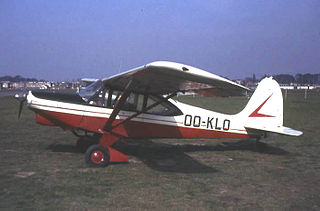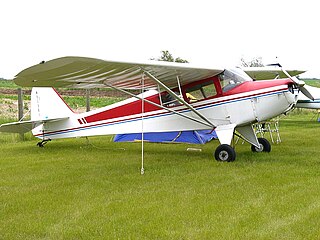
Taylorcraft Aviation is an airplane manufacturer that has been producing aircraft for more than 70 years in several locations.
Claude Piel was a notable French aircraft designer.
No. 587 Squadron RAF was an anti-aircraft co-operation squadron of the Royal Air Force from 1943 to 1946.

Between 1920 and 1951 the Société des Moteurs Salmson in France developed and built a series of widely used air-cooled aircraft engines.
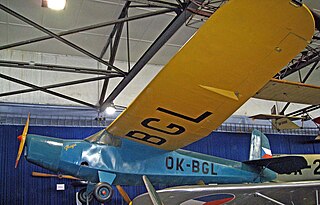
ČKD-Praga was a Czechoslovakian aircraft manufacturer. The company was founded in 1915 as an engine manufacturing company, under the designation Praga. The company started designing aircraft in 1930–31 when the designers Pavel Beneš and Miroslav Hajn came to ČKD-Praga from Avia. Their first aircraft was the Praga E-39 from 1931. It was a military trainer, with a production run of 139 aircraft. ČKD-Praga developed several aircraft over the following years, but none exceeded prototype stage.

Société Industrielle Pour l’Aéronautique (SIPA) was a French aircraft manufacturer established in 1938 by Émile Dewoitine after his previous company, Avions Dewoitine, was nationalized the year before. From 1938-1940, SIPA principally manufactured parts for other French aircraft companies. After World War II, it began developing a series of trainers for the French Air Force.

Compagnie Française d'Aviation (CFA) was a French aircraft manufacturer of the 1930s and 1940s. It was established in 1936 as a division of the Salmson engine company to handle the mass production of the Cricri light aircraft.
No. 511 Squadron was a Royal Air Force transport squadron, active during World War II, the Berlin Airlift and during the sixties and early seventies. It operated, during its three periods of existence, aircraft such as the Douglas Dakota, the Avro York, the Handley Page Hastings and the Bristol Britannia.
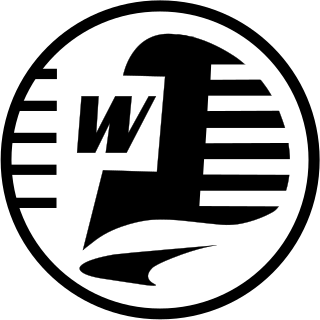
Wassmer was a French specialized woodworking company formed by Bernard Wassmer in 1905. It later became an aircraft manufacturer specializing in gliders. It was bought out by Issoire Aviation, a subsidiary of Siren, in 1978.
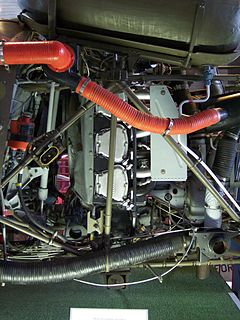
The Lycoming O-435 is a six-cylinder, horizontally opposed fixed-wing aircraft and helicopter engine made by Lycoming Engines. The engine is a six-cylinder version of the four-cylinder Lycoming O-290.
The Globe Aircraft Corporation was an American aircraft manufacturer, formed in 1941 in Fort Worth, Texas. It was declared bankrupt in 1947.
No. 287 Squadron was an anti-aircraft co-operation squadron of the Royal Air Force from 1941 to 1946.
No. 567 Squadron was an anti-aircraft co-operation squadron of the Royal Air Force, formed during World War II and active between December 1943 and June 1946 in the defence of south-east England.
The Renault 4P, also called the Renault Bengali Junior, was a series of air-cooled 4-cylinder inverted in-line aero engines designed and built in France from 1927, which produced from 95 hp (71 kW) to 150 hp (110 kW).
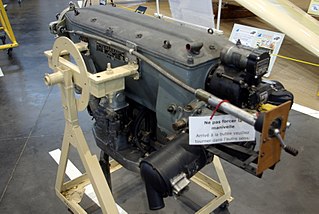
The SNECMA-Régnier 4L is a French four cylinder air-cooled inverted inline piston engine, introduced shortly after the end of World War II.

